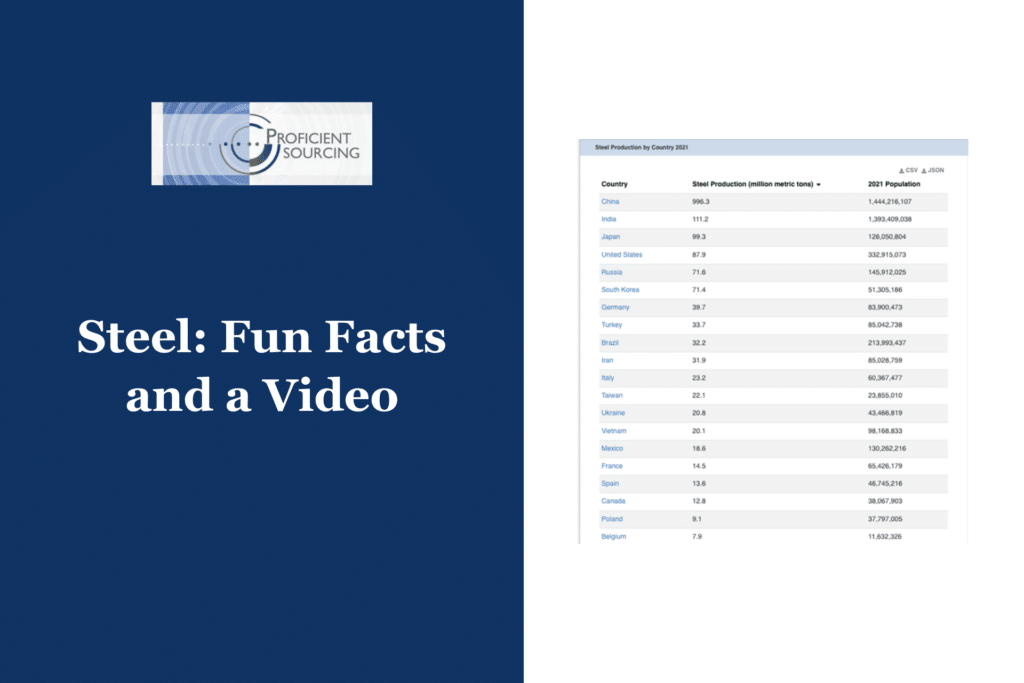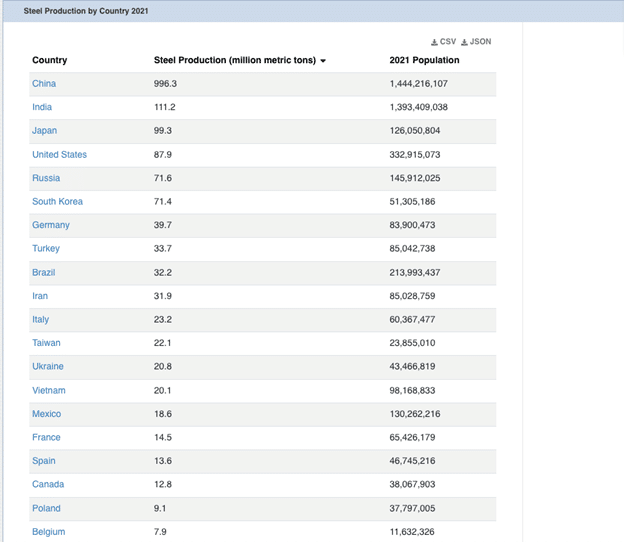
We work with OEM buyers to provide sources for manufactured parts and assemblies. Proficient Sourcing has been doing this work for many years and several companies now rely on us to provide credible suppliers for their outsourcing needs. Generally our large and diverse network of high quality suppliers has been able to address OEM needs. However, recently, deliveries have been hampered by steel shortages and price increases. This seems to be especially acute for steel.
While we have few answers for these problems, we Googled steel and found a vast number of interesting articles and facts. For one, and for nearly a century, the US led the world in steel production until well after WWII. Then, the Soviet Union and Japan competed with the US for world leadership, but more recently China outpaced everyone.
As most everyone knows, now China is the world’s leader in steel production by a great margin—almost 10x the #2 country, which is India. The US has fallen to #4, with Japan #3 according to 2021 statistics:

Of course, this was not always the case. In fact, as late as 1955 Luxembourg out produced China! Who knew! If you’re interested in seeing how time changed the lineup of leading steel producers, here’s a YouTube presentation of the last 100 years of steel production.
For those of us not metal-minded, here are a few other features of steel you might find useful from Visual Capitalist’s 6/2/21 article, “Visualizing 50 Years of Global Steel Production”:
“Steel is the foundation of our buildings, vehicles, and industries, with its rates of production and consumption often seen as markers for a nation’s development. Today, it is the world’s most commonly used metal and most recycled material, with 1,864 million metric tons of crude steel produced in 2020
“Made up primarily of iron ore, steel is an alloy which also contains less than 2% carbon and 1% manganese and other trace elements. While the defining difference might seem small, steel can be 1,000x stronger than iron.
“However, steel’s true strength lies in its infinite recyclability with no loss of quality. No matter the grade or application, steel can always be recycled, with new steel products containing 30% recycled steel on average.
“The alloy’s magnetic properties make it easy to recover from waste streams, and nearly 100% of the steel industry’s co-products can be used in other manufacturing or electricity generation.
“It’s fitting then that steel makes up essential parts of various sustainable energy technologies:
- The average wind turbine is made of 80% steel on average (140 metric tons).
- Steel is used in the base, pumps, tanks, and heat exchangers of solar power installations.
- Electrical steel is at the heart of the generators and motors of electric and hybrid vehicles”.
And so it’s clear steel will be an essential and vital feature of the economy for as far as we can see. Steel manufacturing will continue, but won’t it present a obstacle to carbon free or even carbon neutral plans? Stay tuned. Perhaps we’ll tackle this soon.

